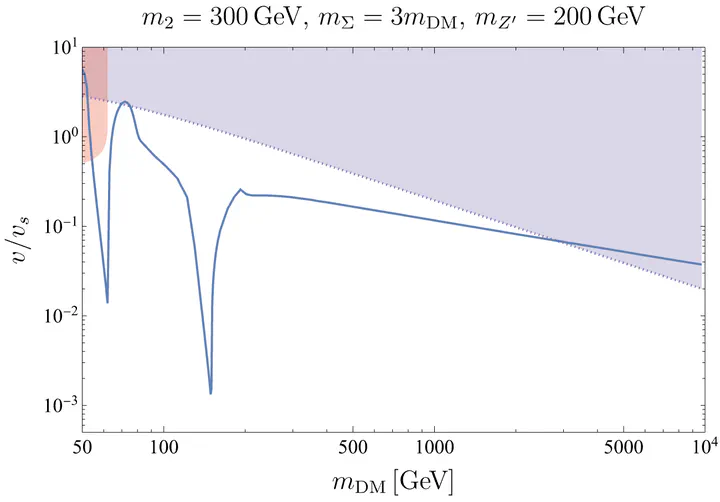Pseudo-Nambu-Goldstone-boson Dark Matter from Three Complex Scalars
 Prediction of viable parameter space.
Prediction of viable parameter space.Abstract
This study explores a dark matter model in which a pseudo-Nambu-Goldstone boson arises as a viable dark matter candidate from the spontaneous and soft breaking of global $U(1)$ symmetries and stabilized by a residual $\mathbb{Z}_3$ discrete symmetry. The model introduces three complex scalar fields, singlets under the Standard Model gauge group, and charged under a dark $U(1)_V$ gauge symmetry together with a permutative exchange symmetry among three scalars. These features naturally suppress the dark matter–nucleon scattering cross section by its Nambu-Goldstone boson nature. In addition to conventional annihilation channels, the $\mathbb{Z}_3$ structure allows semi-annihilation processes, potentially leading to new phenomenological signatures. We analyze theoretical and experimental constraints, including relic abundance, Higgs invisible decays, and perturbative unitarity, and evaluate the elastic scattering cross section for boosted dark matter.
Type
This paper is an outcome of the research project titled pseudo-Nambu-Goldstone boson Dark Matter from Three complex scalars